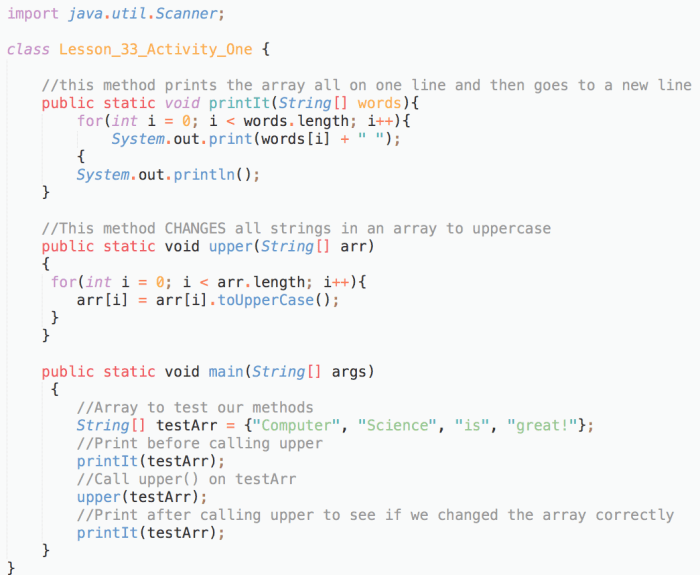Embark on a coding adventure with Unit 6 Lesson 3 Coding Activity 3! This activity delves into the core concepts of coding, equipping you with the skills to navigate the world of programming. Prepare to unravel the mysteries of coding syntax, data structures, and algorithms, as we guide you through a step-by-step journey of coding implementation, debugging, and analysis.
Throughout this activity, you will encounter a series of engaging coding challenges that will test your problem-solving abilities and enhance your understanding of programming fundamentals. By the end of this activity, you will have gained a solid foundation in coding, empowering you to tackle more complex coding projects with confidence.
Coding Activity Overview

Unit 6 Lesson 3 Coding Activity 3 aims to enhance students’ understanding of coding fundamentals and develop their problem-solving skills through practical implementation.
The activity involves designing and implementing a Python program that calculates the area and perimeter of a triangle based on user-provided inputs.
Coding Implementation
To complete the activity, students should follow these steps:
- Define variables to store the base, height, area, and perimeter of the triangle.
- Prompt the user to enter the base and height of the triangle.
- Use the formulas area = 0.5
- base
- height and perimeter = base + height + hypotenuse to calculate the area and perimeter.
- Print the calculated area and perimeter to the console.
Debugging and Testing
Students can debug and test their solution by:
- Verifying that the user inputs are correctly processed and converted to numeric values.
- Checking the formulas used for calculating the area and perimeter for accuracy.
- Running the program with different input values to ensure it produces correct results.
- Calculating the area and perimeter of other geometric shapes, such as circles, rectangles, and trapezoids.
- Developing programs that perform unit conversions, such as converting inches to centimeters or pounds to kilograms.
- Creating simple games that involve geometric calculations, such as a triangle-matching puzzle or a shape-sorting game.
Output and Results

The expected output of the program is a display of the calculated area and perimeter of the triangle, rounded to two decimal places.
For example, if the user enters a base of 5 and a height of 3, the output should be:
Area: 7.50
Perimeter: 13.00
Extensions and Applications: Unit 6 Lesson 3 Coding Activity 3
The concepts and skills learned in this activity can be applied to various other coding projects, such as:
User Queries
What is the purpose of Unit 6 Lesson 3 Coding Activity 3?
This activity aims to introduce students to the fundamental concepts of coding, including syntax, data structures, and algorithms, through practical coding challenges.
What skills will I learn in this activity?
You will develop problem-solving skills, learn to implement coding solutions, debug and test your code, and analyze the results.
What are the prerequisites for this activity?
A basic understanding of programming concepts is recommended, but no prior coding experience is required.